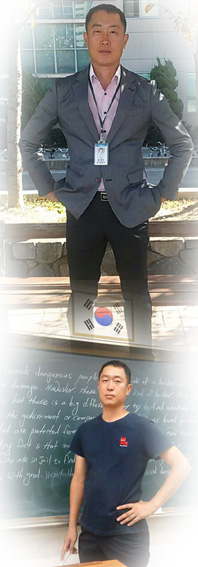2011년 수능 외국어 영역 34번 정답 및 해설 - 송곡닷컴(songgok.com)
34. 다음 글의 주제로 가장 적절한 것을 고르시오
Experienced writers invariably write in a climate of discussion. Their writing is usually embedded in a context of others’ ideas and opinions. Many writers, especially in the academic community, are directly responding to other writers ― a scientist reexamining the experimental procedures of other scientists; a literary critic taking exception to a prevailing method of interpretation; a sociologist offering an alternative explanation of a colleague’s data; a historian participating as respondent in a conference. Such people are not writing in a vacuum. Their ideas often originate in discussion, their writing is a response to discussion, and their papers are designed to stimulate further discussion.
① the use of discussion in writing
② the need for self-criticism in writing
③ advantages of critical thinking on writing
④ research methods in scientific experiments
⑤ types of persuasive techniques in academic fields
1. 내용풀이
글을 쓰는 사람이 글을 쓰는 데 토론을 어떻게 이용하는지에 대해 쓴 글이다. 그러므로 이 글의 주제로 가장 적절한 것은 ① the use of discussion in writing(글을 쓰는 데에 토론을 이용하기)이다. ② 글을 쓰는 데 있어서 자기비판의 필요성 ③글을 쓰는 데 있어서 비판적 사고의 장점 ④ 과학 실험의 연구 방법들 ⑤ 학문분야에서의 설득 기법의 유형들
2. 구문해설
[Experienced writers (invariably) write in a climate of discussion] *climate:분위기(atmosphere) *invariably:변함없이 *부사가 단어가 어려워 해석이 안 되면 생략하세요!!!
→노련하게 글을 쓰는 사람(Experienced writers)은 언제나(invariably) 토론하는 분위기(a climate of discussion)에서 글을 쓴다.
[Their writing is usually embedded in a context of others’ ideas and opinions] *embed: 박다, 새기다, 끼워 넣다 ⇢ be embedded in:~에 끼워 넣어지다
→그들의 글은 대개 다른 사람들의 생각과 견해(others’ ideas and opinions])의 맥락 속에 끼워 넣어 진다.
[Many writers, especially in the academic community, are directly responding to other writers]
→글을 쓰는 많은 사람들(Many writers)은, 특히 학계(academic community)에서는, 글을 쓰는 다른 사람들(other writers)에게 직접적으로 반응한다.
[ - a scientist / (who is) reexamining the experimental procedures of other scientists; a literary critic / (who is) taking exception to a prevailing method of interpretation; a sociologist / (who is) offering an alternative explanation of a colleague’s data; a historian /(who is) participating as respondent in a conference]
* “-” 은 앞 문장 즉 “글을 쓰는 많은 작가들은 다른 작가들에게 직접적으로 반응 한다”는 구체적 예를 들고 있는 동격 역할을 하고 있습니다. 크게 4사람을 들고 있네요. 과학자(a scientist), 문학 비평가(a literary critic), 사회학자(a sociologist) 그리고 역사가(a historian), 각각에 대한 설명은 주격 관계대명사(who)이하가 설명을 하고 있습니다. 직역하자면
→(직역) 다른 과학자들의 실험 절차(the experimental procedures)를 재검토하는(reexamining) 과학자, 유행하고 있는 해석 방법(a prevailing method of interpretation)에 이의를 제기하는(take exception to) 문학 평론가, 동료의 자료(a colleague’s data)에 대해 다르게 설명(an alternative explanation)하는 사회학자, 회의에(in a conference) 응답자로서(as respondent) 참석하는 역사가!!!!
→(의역) 과학자는 다른 과학자들의 실험 절차를 재검토하고, 문학 평론가는 유행하고 있는 해석 방법에 이의를 제기하며, 사회학자는 동료의 자료에 대해 다르게 설명하며, 역사가는 응답자로서 회의에 참석 한다.
[Such people are not writing in a vacuum]
→그러한 사람들은 진공 상태(in a vacuum)에서 글을 쓰지 않는다.
[Their ideas often originate in discussion, their writing is a response to discussion, and their papers are designed to stimulate further discussion.]
→그들의 생각(Their ideas)은 종종 토론에서(in discussion) 시작되며, 그들의 글(their writing)은 토론에 대한 응답(a response to discussion)이고, 그들의 논문(their papers)은 더 깊은 토론(further discussion)을 자극하기 위해 쓴 것이다(디자인 된 것이다).
3. 단어정리
*invariably 변함없이, 항상 *climate 분위기, 환경, 기후 *embed 박다, 새기다, 끼워 넣다 *context 맥락, 문맥 *academic community 학계 *literary 문학의 *critic 비평가, 비판가 *experimental 실험의 *prevailing 우세한, 주요한, 유행하는 *interpretation 해석*reexamine 재검토하다 *procedures 순서, 절차 *take exception to ~에 이의를 제기하다*sociologist 사회학자 *alternative 대안의, 대체의 *colleague 동료 *historian 역사가 *participate 참가하다, 참여하다 *respondent 응답자 *conference 회의, 회담 *vacuum 진공 *originate 시작하다(initiate), 생기다 *stimulate 자극하다 *persuasive 설득의 *critical 비판적인, 비평적인 *persuasive 설득력 있는 *academic fields 학문분야
4. 전문해석
노련하게 글을 쓰는 사람은 언제나 토론하는 분위기에서 글을 쓴다. 그들의 글은 대개 다른 사람들의 생각과 견해의 맥락 속에 끼워 넣어진다. 글을 쓰는 많은 사람들은, 특히 학계에서는, 글을 쓰는 다른 사람들에게 직접적으로 반응한다. 과학자는 다른 과학자들의 실험 절차를 재검토하고, 문학 평론가는 유행하고 있는 해석 방법에 이의를 제기하며, 사회학자는 동료의 자료에 대해 다르게 설명하며, 역사가는 응답자로서 회의에 참석한다. 그러한 사람들은 진공 상태에서 글을 쓰지 않는다. 그들의 생각은 종종 토론에서 시작되며, 그들의 글은 토론에 대한 응답이고, 그들의 논문은 더 깊은 토론을 자극하기 위해 쓴 것이다.





